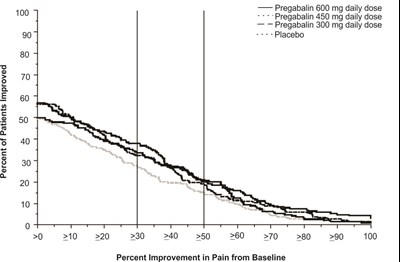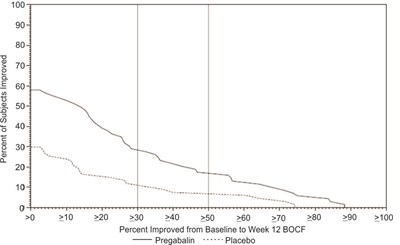Product Images Pregabalin
View Photos of Packaging, Labels & Appearance
Product Label Images
The following 15 images provide visual information about the product associated with Pregabalin NDC 70518-2745 by Remedyrepack Inc., such as packaging, labeling, and the appearance of the drug itself. This resource could be helpful for medical professionals, pharmacists, and patients seeking to verify medication information and ensure they have the correct product.
Pregabalin 100mg 70518 2745 01

This is a description of a medication called Pregabalin with a National Drug Code (NDC) of 70518-2745-01. The medication comes in a capsule form with a strength of 100 mg manufactured by Novadoz Pharmaceuticals LLC in New Jersey. The medication should be kept away from children and the package insert should be followed for directions of use. The medication should be stored at room temperature between 20-26°C (63-77°F) with limited excursions permitted between 15-30°C (59-86°F) as per USP. The medication was repackaged by RemedyRepack Inc., and it is available by prescription only.*
Remedy_Label - Remedy Label

Pregabalin is a medication available in a capsule form manufactured by Novadoz Pharmaceuticals LLC. The National Drug Code (NDC) for this medication is 70518-2745-00. It comes in a quantity of 90 capsules and has a strength of 100mg. The expiration date and lot number are not available. It should be stored between 20-26°C (63-77°F), with excursions permitted to 15-30°C (59-86°F), and kept out of reach of children. The source NDC is 72205-0014-90. The package insert should be checked for further directions. It is RX only, and it has been repackaged by RemedyRepack Inc., in Indiana, PA.*
fig-01 - pregabalin figure 01

The text provides statistical data related to the efficacy of Pregabalin in terms of pain improvement among patients. It shows the percentage of patients whose condition improved after taking different doses of Pregabalin and a placebo. Additionally, it displays the percentage of improvement in pain from baseline after taking Pregabalin.*
fig-02 - pregabalin figure 02

The given text shows a graph displaying the percentage of patients who improved with Pregabalin medication vs Placebo based on the percentage improvement in pain from the baseline. The horizontal axis displays the percentage of improvement, ranging from 10 to 100. The vertical axis represents the percentage of patients improved. There is no further information available to provide a detailed description.*
fig-03 - pregabalin figure 03

This is a chart showing the percentage of patients whose pain improved while taking pregabalin at different doses compared to a placebo. The percentages range from about 70% to 90% improvement. The chart also shows the percentage improvement in pain from baseline.*
fig-05 - pregabalin figure 05

This appears to be a chart or graph displaying the percentage of patients who improved after taking either pregabalin (at doses of 50mg or 100mg three times a day) or a placebo. The chart also measures the percentage improvement in pain from the baseline in increments of 10%.*
fig-06 - pregabalin figure 06

This text seems to be a part of a research/study report. It includes responder rates (%) for different doses of a medication (ranging from 50mg/day to 600mg/day) compared to a placebo. In some cases, statistical significance is noted. The study is referred to as "Study E1" and "Study E3," and the medication is administered either twice a day (BID), three times a day (TID), or the frequency is not specified (T). However, the text is not clear enough to provide more detailed information.*
fig-09 - pregabalin figure 09

This is a graph displaying the percent improvement in pain from baseline. The x-axis shows the percent improvement ranging from 20 to 100 while the y-axis shows the different daily doses of Pregabalin and placebo used. The doses used were Pregabalin 600 mg, Pregabalin 450 mg, Pregabalin 300 mg and Placebo. The graph also shows that Pregabalin 600 mg daily dose had the highest percentage of patients who improved.*
fig-10 - pregabalin figure 10

This appears to be a graph displaying the estimated percentage of subjects without LIR (likely incomplete response) for different doses of Pregabalin versus Placebo over a period of 180 days. The graph shows the estimates for each time point from Day 80 to Day 180.*
fig-11 - pregabalin figure 11

This is a graph that illustrates the percent of subjects who showed improvement from baseline to week 12 in a study comparing the medication Pregabalin to a placebo. The y-axis displays the percentage of subjects improved, ranging from 0 to 100, and the x-axis displays percentage ranges from 0 to 100 in increments of 10. The graph shows that a higher percentage of subjects taking Pregabalin improved compared to those taking the placebo.*
fig-12 - pregabalin figure 12

This table displays the percentage of subjects who showed improvement after 16 weeks of treatment with Pregabalin and placebo. The percentages are grouped based on the level of improvement, ranging from more than 10% to more than 80%.*
* The product label images have been analyzed using a combination of traditional computing and machine learning techniques. It should be noted that the descriptions provided may not be entirely accurate as they are experimental in nature. Use the information in this page at your own discretion and risk.


